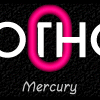





   
|

 | Dr. Vimy and his colleagues have put amalgam fillings in mice and sheep and tracked the mercury vapor that is released into their bodies as they chew. | A quote from Dr.Ephraim Kahn, a California Public Health official. "Mercury has an affinity for the fetus and is much more toxic in unborn children than adults, he also refers to studies in Japan showing that mercury poisoning in pregnant women caused their children to be afflicted with mental retardation and cerebral palsy." The New York Times (November 1, 1970
Minamata disease also provided evidence for delayed neurotoxicity. Perhaps the strongest piece of evidence comes from a study of over 1100 Minamata patients over 40 years old, in which difficulty in performing daily activities increased as a function of age compared to matched controls. Methylmercury may represent the only environmental toxicant for which there is good evidence for delayed neurotoxicity that may be manifested many years after cessation of exposure. Neurotoxicology, 1996 Fall-Winter, 17:3-4, 583-96 The total mercury concentrations in the liver (Hg-L), the kidney cortex (Hg-K) and the cerebral cortex (Hg-C) of 108 children aged 1 day - 5 years, and the Hg-K and Hg-L of 46 fetuses were determined. As far as possible, the mothers were interviewed and their dental status was recorded. The results were compared to mercury concentrations in the tissues of adults from the same geographical area. The Hg-K (n=38) and Hg-L (n=40) of fetuses and Hg-K (n = 35) and Hg-C (n = 35) of older infants (11-50 weeks of life) correlated significantly with the number of amalgam fillings of the mother. Drasch G, Schupp I, Hofl H, Reinke R & Roider G., Eur J Pediatr 153:607-610 (1994) Elemental relationship's to mercury are found by clicking "Hg" on the periodic table at WebElements |
 |
In a telephone interview, Vimy said animal studies have linked low-level mercury exposure to four pathologies: kidney dysfunction, antibiotic resistance, Alzheimer's disease and immune-system deficiencies. | |
 | His work over the past 15 years has led him to say publicly that "there is no safe threshold for mercury exposure, none." | |
 |
Toxicologists at the Norwegian Institute of Public Health calculated the WHO exposure limit for total mercury found to be the 150 times above acute threshold levels. They commented: Thus, even one-tenth of the amount of amalgam stipulated by NIOM may lead to exposures considerably in excess of these exposure limits. And: For all the aforementioned metals, the calculated values are below the threshold of acute toxicity, but the amounts of cadmium and especially mercury are disquietingly high considering the possibility of chronic poisoning. | |
 |
It is estimated that 200,000,000 people have mercury in their mouths. Today, only about 300 of the 16,000 chemicals suspected of being toxic to human health and reproduction are included in the inventory. Of the 600 known carcinogens over 300 contain mercury. The main source of human exposure is dental mercury. The two industries that contribute the most to the atmosphere - mining and power-generating plants - are specifically exempted from reporting requirements under the current law. | |
 |
Neither the dentist nor consumer has authority over the tooth filled with mercury, unless otherwise stated by law. Therefore know your rights to a disclaimer releasing yourself of a noxious substance. ADA: Ethics of Removing Amalgam. Note: Mercury is not an allergen according to historical science, possible misnomer of the words "metallurgy" or "alloy" considering allergy is an additional cause or element such as gold.
California Dental Patient Bill of Rights: You have a right to schedule an appointment with your dentist in a timely manner. You have a right to see the dentist every time you receive dental treatment. You have a right to know in advance the type and expected cost of treatment. You have a right to expect dental team members to use appropriate infection and sterilization controls. You have a right to ask about treatment alternatives and be told, in language you can understand, the advantages and disadvantages of each. You have a right to ask your dentist to explain all the treatment options regardless of coverage or cost. You have a right to know the education and training of your dentist and the dental team. You have a right to know the professional rules, laws and ethics that apply to your dentist and the dental team. You have a right to choose your own dentist. | |
 |
Immuntoxicology Of Metals.
Laboratory diagnosis of sensitization induced by mercury and dental metals. The health risk associated with metals is controversially discussed. Besides uptake from the environment, metals released by dental implants are the most important source of the total body load. It is undisputed that mercury or silver from dental amalgam as well as gold, palladium or copper from dental implants are continously released and subsequently accumulate in the kidney, liver, central nervous system and other organs. The resulting total body load usually remains below the toxic limit, but the health risks of subtoxic long-term exposure are not sufficiently known. In addition to their toxic potential, metals have a high potential of inducing allergic sensitization. Type 1 allergies (immediate type) are rare, but type IV allergies (delayed type; contact dermatitis) are quite common. With a prevalence of 15-23% among the female population, nickel is by far the most common contact allergen and often associated with hypersensitivity to chromium or cobalt. Adverse reactions to gold, palladium, cadmium, silver or copper are increasingly observed. Hypersensitivity reactions are considerably more frequent among individuals with metal implants than among the general population. Women are more often affected than men. Increasing evidence suggests that hypersensitivity to certain metals has a genetic link. A possible basis for metal allergies could be the reaction of a metal of a specific HLA-II antigen, which leads to the development of auto-reactive T-cells. Animal models have shown that autoimmune reactions to metals (gold, nickel, mercury and silver) often occur in genetically susceptible rodents. So far there are only a few hints that such reactions do also occur in humans, but metals are being increasingly discussed as precipitating factors for autoimmune diseases such as systemic sclerodermia, rheumatoid arthritis, glomerulonephritis, and multiple sclerosis. The diagnosis of metal hypersensitivity is to date exclusively based on epicutanous testing which, however, has serious limitations. For this reason there is increasing interest in the introduction of in vitro tests. The lymphocyte transformation test (LTT), for instance, is particularly suited for the diagnosis of type IV hypersensitivity reactions and for broader screening programs. More specialized in vitro tests are the cytokine release test for the differentiation of Th1- and Th2-type reactions, and the antigen-induced CD69 expression test which permits rapid assessment of the metal reactivity of lymphocyte subpopulations such as T-cells, B-cells or NK cells. Science Extract: Immuntoxicologi der Metalle. Labordiagnostik der Quecksilber- und Dentalmetall-Sensibilisierung. Authors: Bieger, W P Source: Clin Lab, 1996(4), 42: 243-255. [Review]" | |


